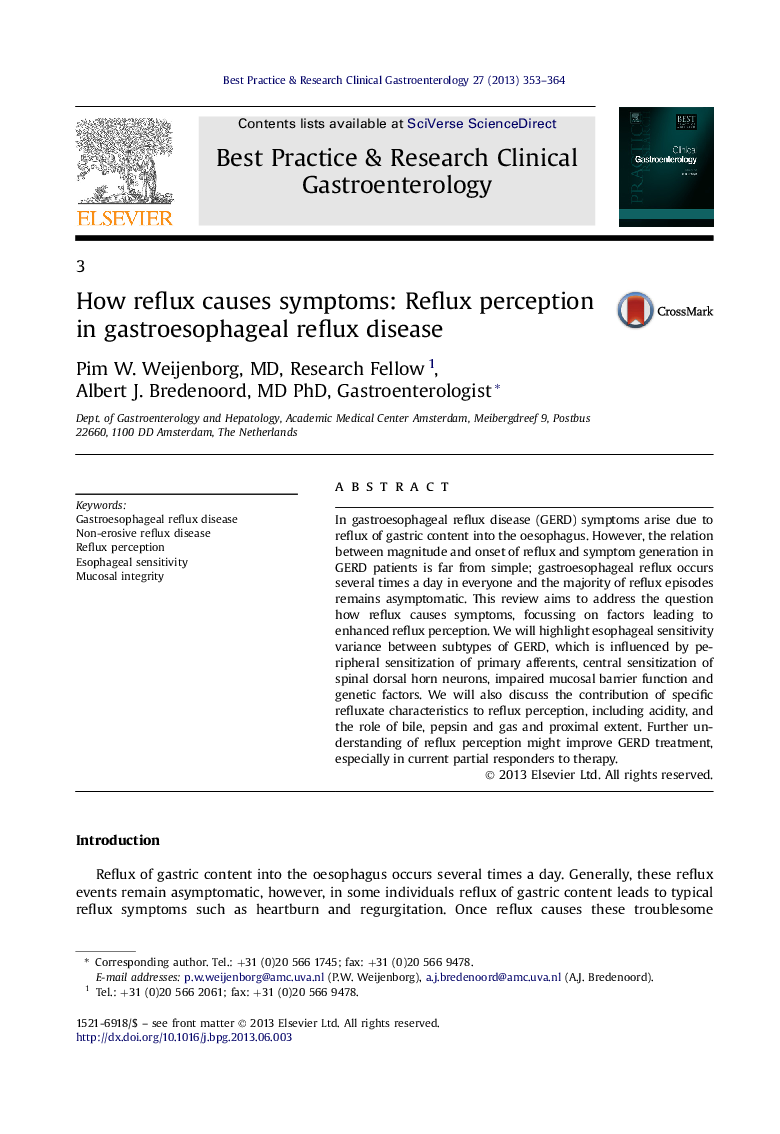| Article ID | Journal | Published Year | Pages | File Type |
|---|---|---|---|---|
| 3254268 | Best Practice & Research Clinical Gastroenterology | 2013 | 12 Pages |
In gastroesophageal reflux disease (GERD) symptoms arise due to reflux of gastric content into the oesophagus. However, the relation between magnitude and onset of reflux and symptom generation in GERD patients is far from simple; gastroesophageal reflux occurs several times a day in everyone and the majority of reflux episodes remains asymptomatic. This review aims to address the question how reflux causes symptoms, focussing on factors leading to enhanced reflux perception. We will highlight esophageal sensitivity variance between subtypes of GERD, which is influenced by peripheral sensitization of primary afferents, central sensitization of spinal dorsal horn neurons, impaired mucosal barrier function and genetic factors. We will also discuss the contribution of specific refluxate characteristics to reflux perception, including acidity, and the role of bile, pepsin and gas and proximal extent. Further understanding of reflux perception might improve GERD treatment, especially in current partial responders to therapy.
